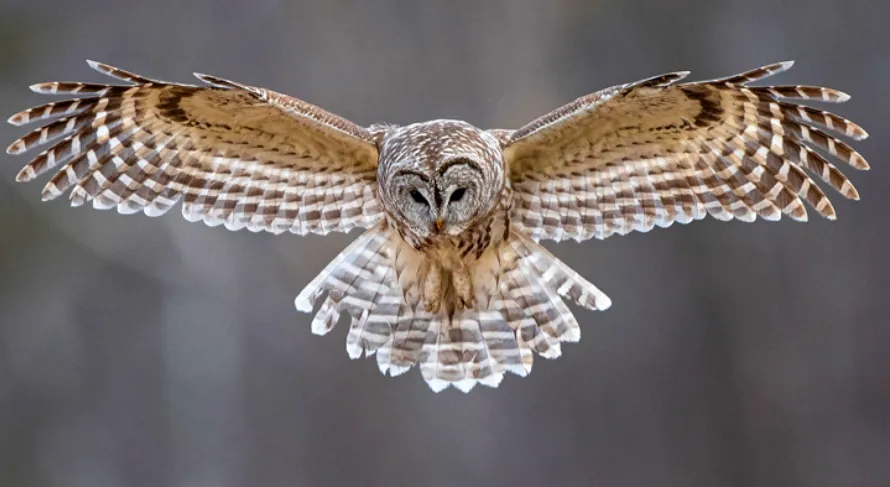The information was obtained from only reputable sources and verified by an Ornithologist.
There are many different types of owls in South Carolina. In this blog post, we will discuss the most common ones that you will see in the state. The great horned owl is probably the most well-known owl in South Carolina. They are large and can be easily identified by their “horns.” Barred owls are also common in the state. They have a distinct “whoop” call that makes them easy to identify. There are many other types of owls that can be found in South Carolina, including the saw-whet owl, elf owl, and long-eared owl. We will go over each of these owls in detail in this blog post!
Most Common Owl Species in South Carolina
Great Horned Owl
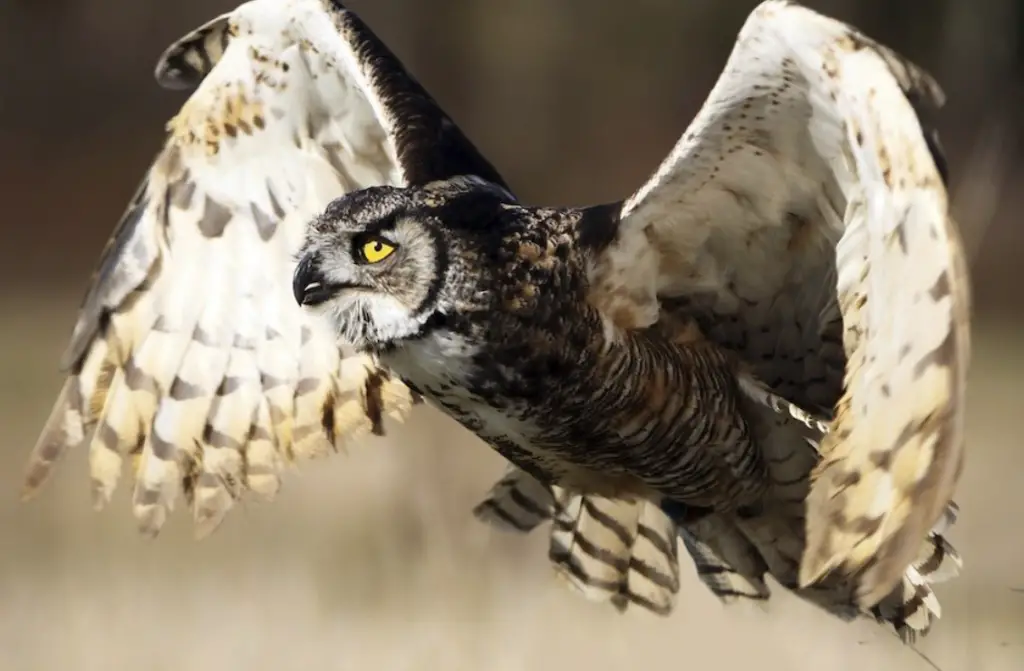
The great horned owl is a large owl with distinctive ear tufts. It is found in woodlands across North and South America. The great horned owl is a powerful predator and capable of taking down large prey items such as rabbits, skunks, and even deer.
The great horned owl has excellent eyesight and hearing, which it uses to locate its prey. The owl also has sharp talons and powerful feet, which it uses to grasp and kill its prey.
The great horned owl is a nocturnal bird of prey, meaning that it hunts at night. During the day, the owl roosts in trees or on cliffs.
The great horned owl is a solitary bird, meaning that it does not form flocks or pairs with other owls. The owl nests in trees, often using the abandoned nests of other birds such as hawks and crows.

Northern Saw-Whet Owl
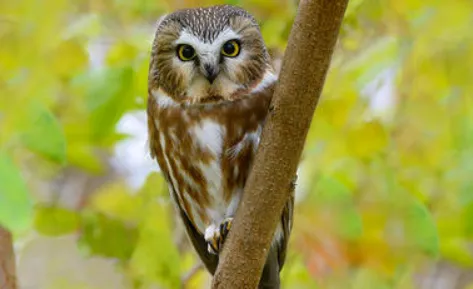
The Northern Saw-Whet Owl is a large owl with a rounded head and no ear tufts. It has yellow eyes and a black beak. The body is white with brown streaks. The wings are long and broad.
The tail is short and square. The legs are feathered to the toes. This owl hunts at night, perching on a branch or in a tree. It watches for prey and then swoops down to catch it. The Northern Saw-Whet Owl eats small mammals, such as mice, rats, and squirrels.
It also eats birds, reptiles, and insects. This owl nests in a tree hole or nest box. The female lays three to six eggs. She incubates the eggs for 28 days. The young owls leave the nest at about six weeks old. They can fly at eight weeks old.
The Northern Saw-Whet Owl is found in northern North America. In the United States, it is found in Minnesota, Wisconsin, Michigan, and Maine. In Canada, it is found in Ontario and Quebec. This owl is also found in Europe and Asia. It winters in southern Europe, Africa, and Asia.
The Northern Saw-Whet Owl is a predator of small mammals, birds, reptiles, and insects. It has been known to eat over 100 small mammals in a single season!
The Northern Saw-Whet Owl is nocturnal, meaning it is most active at night.

Eastern Screech-Owl
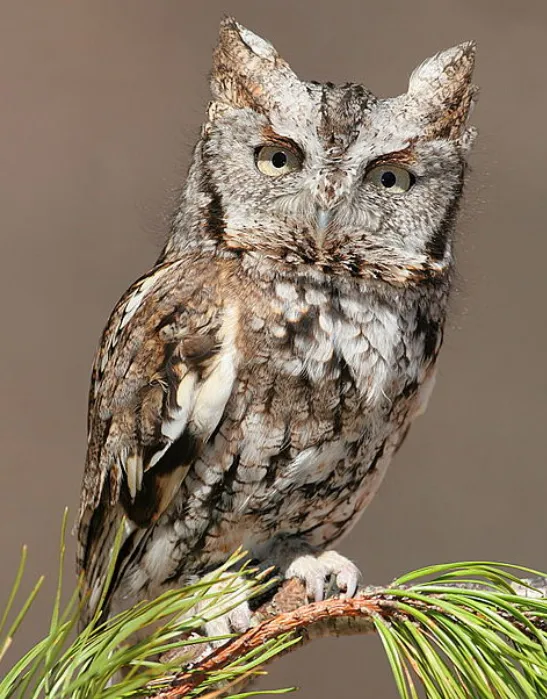
The Eastern Screech Owls are small owls with large, round heads and ear tufts. It has bright yellow eyes and a gray beak. The body is either reddish-brown or gray with white spots.
This owl can be found in wooded areas near rivers, lakes, and marshes. It feeds on small mammals, insects, and birds. The Eastern Screech-Owl is active at night and roosts during the day in tree cavities.
It nests in trees, using old woodpecker holes or natural cavities.
The female lays two to six eggs which hatch in about a month. The young owls leave the nest after about seven weeks.
The Eastern Screech-Owl is a non-migratory bird and can be found in eastern North America year-round.

American Barn Owl
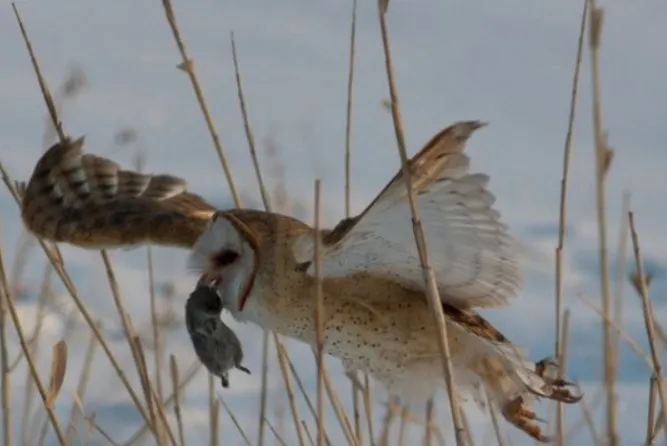
The American barn owl is a large, stocky owl with a round head and no ear tufts. It has a white face with black eyes and a dark brown or gray body with heavily streaked white underparts.
This owl gets its name from its habit of roosting and nesting in old barns and other structures. It can also be found roosting in trees, cliffs, and caves. The American barn owl is a nocturnal hunter that feeds primarily on small mammals such as mice, rats, and voles.
It hunts by flying low over the ground and listening for the sounds of its prey. When it hears something, it swoops down to capture the animal with its sharp talons.
The American barn owl is found throughout the United States, but is most common in the southern and western states. It is a non-migratory bird that typically stays in the same area year-round.

Barn Owl
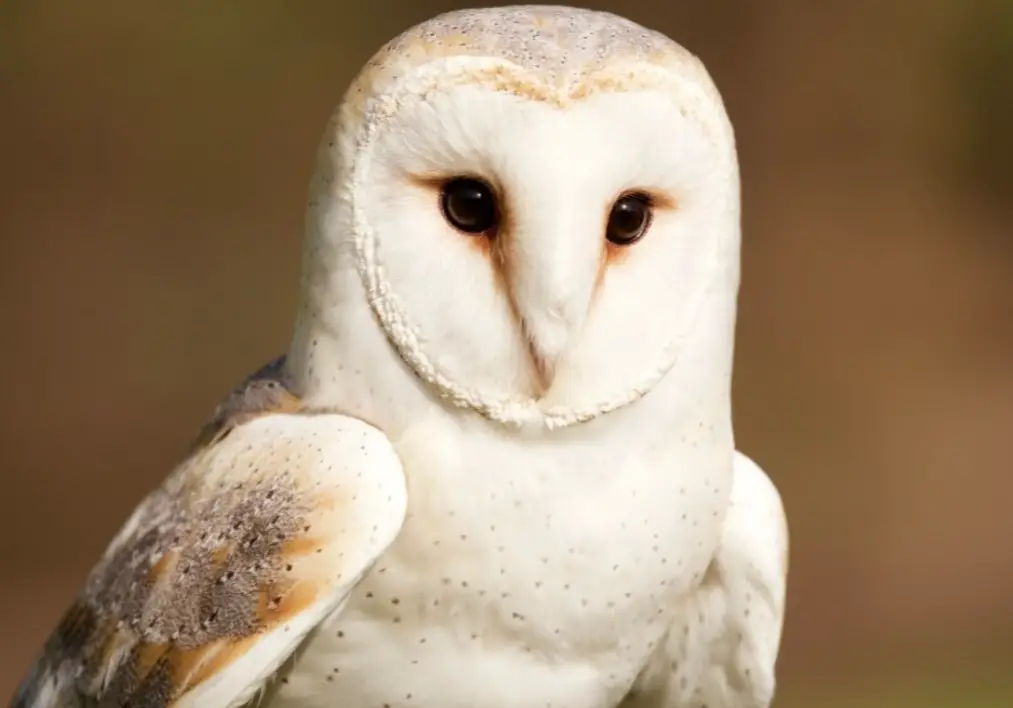
The barn owls are medium-sized owls with a large, round head and no ear tufts. Its eyes are dark brown and its bill is yellowish-brown. The upper parts of the barn owl are grayish-brown, while the underparts are pale gray with some darker streaks.
This owl gets its name from its habit of roosting in old barns and other buildings. The barn owl is found throughout South Carolina.
The barn owl is nocturnal, meaning it is most active at night. During the day, you can find this owl roosting in trees or on posts.
At night, the barn owl hunts for small mammals such as mice, shrews, and voles. The barn owl swoops down on its prey, grabbing it with its sharp talons.
If you’re lucky enough to see a barn owl in the wild, you’ll be able to hear its distinctive call. The barn owl makes a “twit twit twoo” sound that is sure to send a shiver down your spine!

Barred Owl
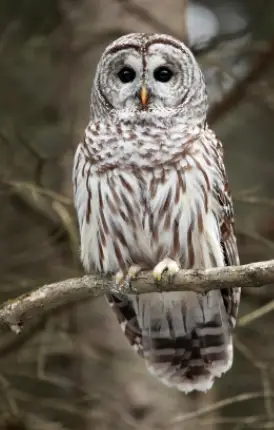
The barred owl is a large owl with a round head and no ear tufts. It has dark eyes and a yellow beak. The upperparts are brown with white bars and the underparts are white with brown bars. The legs and feet are covered in feathers.
The barred owl is found in woods, forests, and swamps. It hunt at night and roosts during the day. It eats small mammals, birds, reptiles, and amphibians.
The barred owl is not considered to be threatened or endangered. However, habitat loss and degradation are a concern for these owl species.
It’s important to be able to identify barred owls in South Carolina so that you can take steps to protect them and their habitat.

Related article: Types of Owls in Michigan
Short-eared Owl
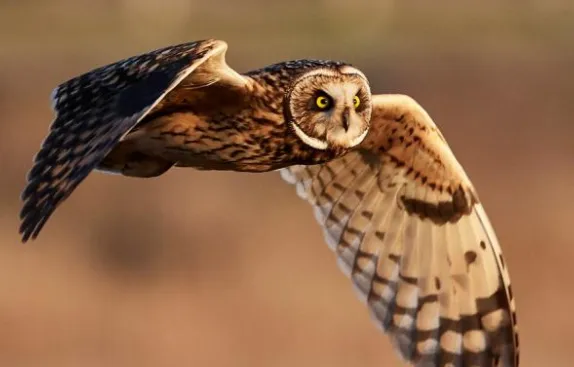
The Short-eared Owl is a medium sized owl with long, broad wings and a short tail. They have large yellow eyes and a black beak. The female owls are larger than the males.
These owls are mostly nocturnal but can occasionally be seen hunting during the day. Their diet consists of small mammals such as mice, voles, and shrews. Short-eared Owls can be found in open fields, marshes, and meadows.
In South Carolina, they are most often seen in the Lowcountry and Pee Dee regions.
Short-eared owls are very curious birds and will often approach humans if they see them.
If you see a short-eared owl, be sure to watch it for a while and enjoy its hunting behaviors. These owls are fun to watch as they swoop down low to the ground in search of their next meal.
Short-eared owls are beautiful birds and it is always a treat to see one in South Carolina.
If you have the chance to see one, be sure to take the time to watch it and enjoy its hunting behaviors. These owls are fascinating to watch as they search for their next meal.

Long-eared Owls
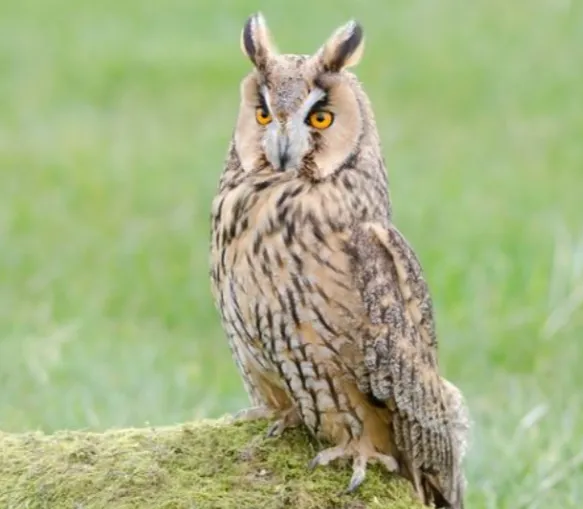
The long-eared owl is a medium-sized owl with prominent ear tufts. It has orange eyes and a whitish face with black streaks. The upperparts are greyish brown and the underparts are pale with dark streaks. This owl is nocturnal and hunts small mammals, reptiles, and insects. Long-eared owls are found in woodlands, farmland, and forests. In South Carolina, they are most common in the Upstate.
To identify a long-eared owl, look for the following characteristics:
- Prominent ear tufts
- Orange eyes
- Whitish face with black streaks
- Greyish brown upperparts
- Pale underparts with dark streaks
If you see an owl with these characteristics, it is likely a long-eared owl. To be sure, look for the following behaviors:
- Nocturnal behavior
- Hunting small mammals, reptiles, and insects
- Found in woodlands, farmland, and forests

How big are owls in South Carolina?
Owls come in a variety of shapes and sizes, so it’s hard to give a definitive answer to this question. However, South Carolina is home to several species of owls, including the barn owl, the barred owl, and the short-eared owl.
The barn owl is the largest of these three species, with a wingspan that can reach up to four feet. The barred owl is slightly smaller, with a wingspan of around three and a half feet. The short-eared owl is the smallest of the three, with a wingspan of only two and a half feet.
Are owls good to have around your house?
Owls are beneficial to have around your house because they help keep the rodent population under control. However, some people may not like the idea of having an owl living near their home because of the noise they can make. If you’re thinking about getting an owl as a pet, be sure to do your research first to see if it’s the right fit for you.
What is the most common owl in South Carolina?
The most common owl in South Carolina is the barred owl. These owls are nocturnal and can be found in woodlands, farmland, and forests. They are mostly gray with white streaks on their chest and have a wingspan of around three and a half feet. Barred owls hunt small mammals, reptiles, and amphibians. If you see an owl with these characteristics, it is likely a barred owl.

An avid ornithologist, zoologist and biologist with an unwavering passion for birds and wild animals.
Dr. Wilson’s journey in ornithology began in childhood and led him to obtain a Ph.D. in Ornithology from the prestigious Avian Research Institute. He has worked closely with renowned experts in the field and conducted extensive research and field studies globally.

